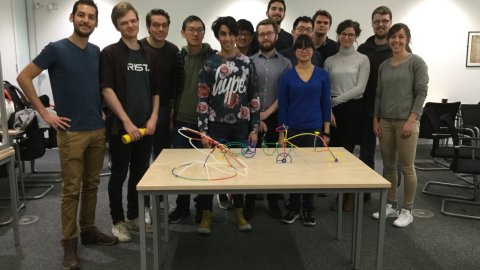A Nonlinear Spectral Method for Network Core-Periphery Detection
Abstract
Dimension reduction is an overarching theme in data science: we enjoy finding informative patterns, features or substructures in large, complex data sets. Within the field of network science, an important problem of this nature is to identify core-periphery structure. Given a network, our task is to assign each node to either the core or periphery. Core nodes should be strongly connected across the whole network whereas peripheral nodes should be strongly connected only to core nodes. More generally, we may wish to assign a non-negative value to each node, with a larger value indicating greater "coreness." This type of problem is related to, but distinct from, commumnity detection (finding clusters) and centrality assignment (finding key players), and it arises naturally in the study of networks in social science and finance. We derive and analyse a new iterative algorithm for detecting network core-periphery structure.
Using techniques in nonlinear Perron-Frobenius theory we prove global convergence to the unique solution of a relaxed version of a natural discrete optimization problem. On sparse networks, the cost of each iteration scales linearly with the number of nodes, making the algorithm feasible for large-scale problems. We give an alternative interpretation of the algorithm from the perspective of maximum likelihood reordering of a new logistic core--periphery random graph model. This viewpoint also gives a new basis for quantitatively judging a core--periphery detection algorithm. We illustrate the algorithm on a range of synthetic and real networks, and show that it offers advantages over the current state-of-the-art.
This is joint work with Francesco Tudisco (Strathclyde)


